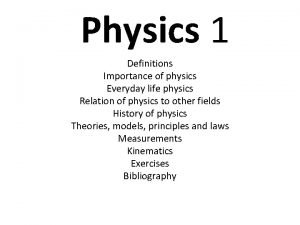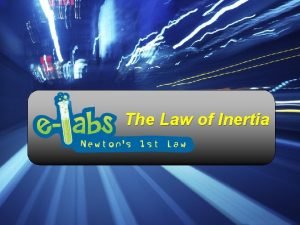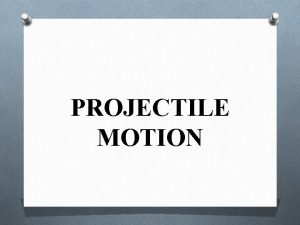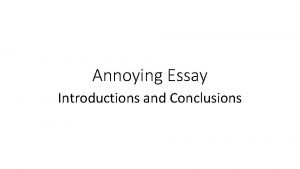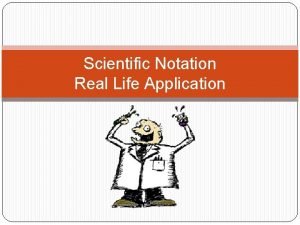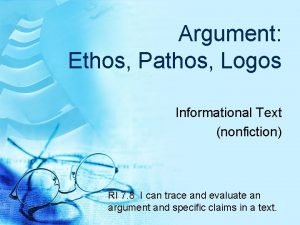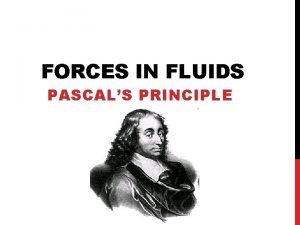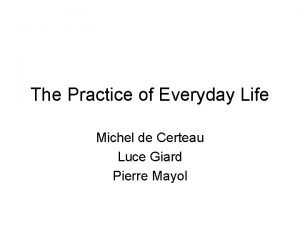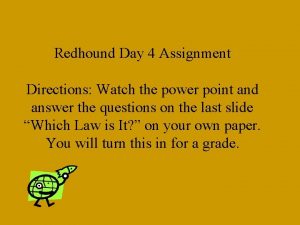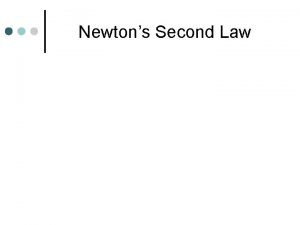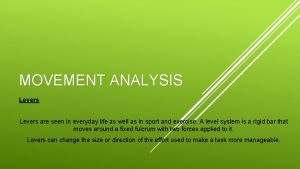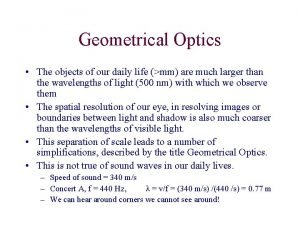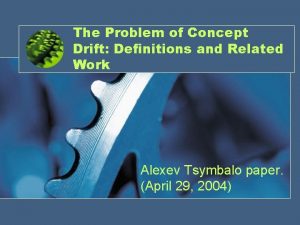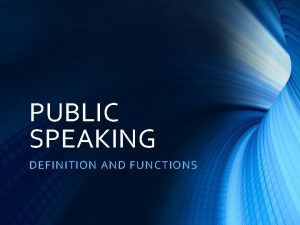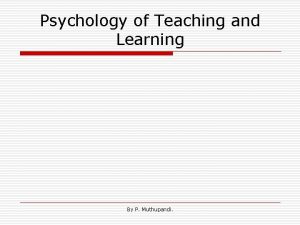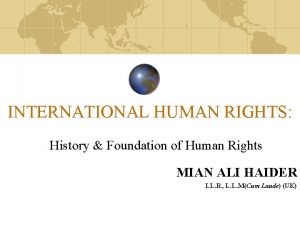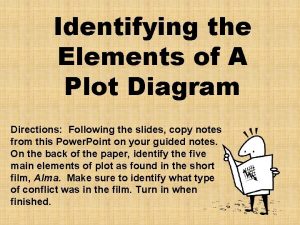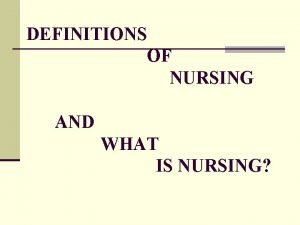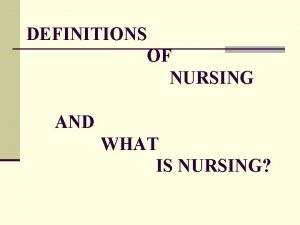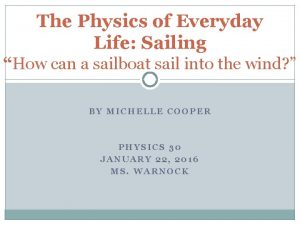Physics 1 Definitions Importance of physics Everyday life


































































![Bibliography: • [Textbooks] http: //physics 15. weebly. com/ • [Wiki. Pedia] http: //en. wikipedia. Bibliography: • [Textbooks] http: //physics 15. weebly. com/ • [Wiki. Pedia] http: //en. wikipedia.](https://slidetodoc.com/presentation_image_h/1396c8fc21f37247c4d4f86bd35e8e70/image-67.jpg)
- Slides: 67

Physics 1 Definitions Importance of physics Everyday life physics Relation of physics to other fields History of physics Theories, models, principles and laws Measurements Kinematics Exercises Bibliography

No mistakes, right decisions It is all about making no mistakes and right decisions

Patterns and invariants It is all about patterns and invariants

What is physics? Physics (from Ancient Greek: “knowledge of nature”) is the natural science that involves the study of matter and its motion through space and time, along with related concepts such as energy and force. More broadly, it is the general analysis of nature, conducted in order to understand how the universe behaves. Physics structure: Mechanics, thermodynamics, electromagnetism, photonics, relativity, atomic and nuclear physics

Why is physics important? • • • Parallel universes, worm holes, twin paradox, teleportation, gadgets, • quantum computers, • • navigation, military applications, business (radars, space, etc. ) etc.

Parallel universes

teleportation

quantum computer

Fusion power is the energy generated by nuclear fusion processes. In fusion reactions, two light atomic nuclei fuse to form a heavier nucleus (in contrast with fission power). In doing so they release a comparatively large amount of energy arising from the binding energy due to the strong nuclear force which is manifested as an increase in temperature of the reactants. Fusion power is a primary area of research in plasma physics. The term is commonly used to refer to potential commercial production of net usable power from a fusion source, similar to the usage of the term "steam power". The leading designs for controlled fusion research use magnetic (tokamak design) or inertial (laser) confinement of a plasma. Both approaches are still under development and are years away from commercial operation in which heat from the fusion reaction is used to operate a steam turbine which drives electrical generators, as in existing fossil fuel and nuclear fission power stations.

Higgs boson The Higgs boson or Higgs particle is an elementary particle in the Standard Model of Particle physics. Its main relevance is that it is the smallest possible excitation of the Higgs field – a field that unlike the more familiar electromagnetic field cannot be "turned off", but instead takes a constant value almost everywhere. The presence of this field explains why some fundamental particles have mass while the symmetries controlling their interactions should require them to be massless, and why the weak force has a much shorter range than the electromagnetic force.

LHC Large Hardron Collider (LHC) allows us to find new physics, beyond the Standard Model.

Everyday life physics • • • Why are the skies blue, clouds white, and sunrise and sunset red? (romantic) How can airplane and helicopter fly? Vendor bicycle wrongly designed Small wheels and wrongly designed bikes

Business physics • Radar project • Space project • Etc.

Relation of physics to other fields • • Telematics Food technology and other technologies Agro-business mechanics Biology Economics Constructions

History of physics • Ptolemy c. AD 90 – c. 168, was a Greco. Egyptian writer of Alexandria, known as a mathematician, astronomer, etc. • Copernicus (19 February 1473 – 24 May 1543) was a Renaissance mathematician and astronomer who formulated a model of the universe that placed the Sun rather than the Earth at its center.

History of physics: Bruno Giordano Bruno (1548 – February 17, 1600), was an Italian Dominican friar, philosopher, mathematician, poet, and astrologer. He is celebrated for his cosmological theories, which went even further than then-novel Copernican model, proposing that the stars were just distant suns surrounded by their own exoplanets, and moreover the possibility that these planets could even foster life of their own (a philosophical position known as cosmic pluralism). He also insisted that the universe is in fact infinite, thus having no celestial body at its "center".

History of physics: Galileo Galilei (15 February 1564 – 8 January 1642), often known mononymously as Galileo, was an Italian physicist, mathematician, engineer, astronomer, and philosopher who played a major role in the scientific revolution. His achievements include improvements to the telescope and consequent astronomical observations and support for Copernicanism. Galileo has been called the "father of modern observational astronomy", the "father of modern physics", the "father of science", and "the Father of Modern Science".

History of physics: Newton (25 December 1642 – 20 March 1726/7) was an English physicist and mathematician (described in his own day as a "natural philosopher") who is widely recognised as one of the most influential scientists of all time and as a key figure in the scientific revolution. His book Philosophiæ Naturalis Principia Mathematica ("Mathematical Principles of Natural Philosophy"), first published in 1687, laid the foundations for classical mechanics. Newton also made seminal contributions to optics.

History of physics: Einstein Albert Einstein (14 March 1879 – 18 April 1955) was a German-born theoretical physicist and philosopher of science. He developed the general theory of relativity, one of the two pillars of modern physics (alongside quantum mechanics). [2][4] He is best known in popular culture for his mass–energy equivalence formula E = mc 2 (which has been dubbed "the world's most famous equation"). He received the 1921 Nobel Prize in Physics "for his services to theoretical physics, and especially for his discovery of the law of the photoelectric effect". The latter was pivotal in establishing quantum theory.

History of physics: Planck Max Karl Ernst Ludwig Planck, (April 23, 1858 – October 4, 1947) was a German theoretical physicist who originated quantum theory, which won him the Nobel Prize in Physics in 1918. Planck made many contributions to theoretical physics, but his fame rests primarily on his role as originator of the quantum theory. This theory revolutionized human understanding of atomic and subatomic processes, just as Albert Einstein’s theory of relativity revolutionized the understanding of space and time. Together they constitute the fundamental theories of 20 th-century physics.

History of physics: Schrödinger Erwin Rudolf Josef Alexander Schrödinger (12 August 1887 – 4 January 1961), sometimes written as Erwin Schrodinger or Erwin Schroedinger, was a Nobel Prize-winning Austrian physicist who developed a number of fundamental results in the field of quantum theory, which formed the basis of wave mechanics: he formulated the wave equation (stationary and time-dependent Schrödinger equation) and revealed the identity of his development of the formalism and matrix mechanics. Schrödinger proposed an original interpretation of the physical meaning of the wave function and in subsequent years repeatedly criticized the conventional Copenhagen interpretation of quantum mechanics (using e. g. the paradox of Schrödinger's cat).

History of physics: Dirac Paul Adrien Maurice Dirac (8 August 1902 – 20 October 1984) was an English theoretical physicist who made fundamental contributions to the early development of both quantum mechanics and quantum electrodynamics. He was the Lucasian Professor of Mathematics at the University of Cambridge, a member of the Center for Theoretical Studies, University of Miami, and spent the last decade of his life at Florida State University. Among other discoveries, he formulated the Dirac equation, which describes the behavior of fermions and predicted the existence of antimatter. Dirac shared the Nobel Prize in Physics for 1933 with Erwin Schrödinger, "for the discovery of new productive forms of atomic theory". He also did work that forms the basis of modern attempts to reconcile general relativity with quantum mechanics. He was regarded by his friends and colleagues as unusual in character. Albert Einstein said of him, "This balancing on the dizzying path between genius and madness is awful". His mathematical brilliance, however, means he is regarded as one of the most significant physicists of the 20 th century.

Tesla Great physicist and inventor

Stephen Hawking The most famous physicist in the world today

Theories Theory is a contemplative and rational type of abstract or generalizing thinking, or the results of such thinking. Depending on the context, the results might for example include generalized explanations of how nature works. The word has its roots in ancient Greek, but in modern use it has taken on several different related meanings. A scientific theory is a well-substantiated explanation of some aspect of the natural world that is acquired through the scientific method and repeatedly tested and confirmed through observation and experimentation. As with most (if not all) forms of scientific knowledge, scientific theories are inductive in nature and aim for predictive power and explanatory force.

Relativity Theory is one of the main theories of physics dealing with gravity.

Standard Model unites electromagnetic, weak and strong forces in one equation.

String Theory tries to be the Theory of Everything.

Theory of Everything Unites all physical forces with 1 equation

Everything out of nothing

Law A scientific law is a statement based on repeated experimental observations that describes some aspect of the universe. A scientific law always applies under the same conditions, and implies that there is a causal relationship involving its elements. Factual and well-confirmed statements like "Mercury is liquid at standard temperature and pressure" are considered too specific to qualify as scientific laws. A central problem in the philosophy of science, going back to David Hume, is that of distinguishing causal relationships (such as those implied by laws) from principles that arise due to constant conjunction. Accuracy of physical laws is very high.

Principle A principle is a law or rule that has to be, or usually is to be followed, or can be desirably followed, or is an inevitable consequence of something, such as the laws observed in nature or the way that a system is constructed. The principles of such a system are understood by its users as the essential characteristics of the system, or reflecting system's designed purpose, and the effective operation or use of which would be impossible if any one of the principles was to be ignored. Examples of principles: • Descriptive comprehensive and fundamental law, doctrine, or assumption • Normative rule or code of conduct • Law or fact of nature underlying the working of an artificial device

Model is a simplified representation of reality.

derivative

differential

differential equation

integral

Measurements It is all about measurements. There are several base units and all the others are derived from the base ones.

Accuracy and precision are defined in terms of systematic and random errors. The more common definition associates accuracy with systematic errors and precision with random errors. Another definition, advanced by ISO, associates trueness with systematic errors and precision with random errors, and defines accuracy as the combination of both trueness and precision.



Normal distribution The normal distribution is a very commonly occurring continuous probability distribution—a function that tells the probability that any real observation will fall between any two real limits or real numbers, as the curve approaches zero on either side. Normal distributions are extremely important in statistics and are often used in the natural and social sciences for realvalued random variables whose distributions are not known.

Systematic errors are biases in measurement which lead to the situation where the mean of many separate measurements differs significantly from the actual value of the measured attribute. All measurements are prone to systematic errors, often of several different types. Sources of systematic error may be imperfect calibration of measurement instruments (zero error), changes in the environment which interfere with the measurement process and sometimes imperfect methods of observation can be either zero error or percentage error. For example, consider an experimenter taking a reading of the time period of a pendulum swinging past a fiducial mark: If their stopwatch or timer starts with 1 second on the clock then all of their results will be off by 1 second (zero error). If the experimenter repeats this experiment twenty times (starting at 1 second each time), then there will be a percentage error in the calculated average of their results; the final result will be slightly larger than the true period. Distance measured by radar will be systematically overestimated if the slight slowing down of the waves in air is not accounted for. Incorrect zeroing of an instrument leading to a zero error is an example of systematic error in instrumentation.

Random errors are errors in measurement that lead to measurable values being inconsistent when repeated measures of a constant attribute or quantity are taken. The word random indicates that they are inherently unpredictable, and have null expected value, namely, they are scattered about the true value, and tend to have null arithmetic mean when a measurement is repeated several times with the same instrument. All measurements are prone to random error.

Reproducibility is the ability of an entire experiment or study to be duplicated, either by the same researcher or by someone else working independently.

Reproducibility Reproducing an experiment is called replicating it. Reproducibility is one of the main principles of the scientific method.

Reproducibility The values obtained from distinct experimental trials are said to be commensurate if they are obtained according to the same reproducible experimental description and procedure.

Reproducibility The basic idea can be seen in Aristotle's dictum that there is no scientific knowledge of the individual, where the word used for individual in Greek had the connotation of the idiosyncratic, or wholly isolated occurrence.

Reproducibility Thus all knowledge, all science, necessarily involves the formation of general concepts and the invocation of their corresponding symbols in language (cf. Turner).

Reproducibility Aristotle′s conception about the knowledge of the individual being considered unscientific is due to lack of the field of statistics in his time, so he could not appeal to statistical averaging by the individual.

Reproducibility A particular experimentally obtained value is said to be reproducible if there is a high degree of agreement between measurements or observations conducted on replicate specimens in different locations by different people—that is, if the experimental value is found to have a high precision.

Absolute, relative and percentage errors One commonly distinguishes between the relative error and the absolute error. The absolute error is the magnitude of the difference between the exact value and the approximation. The relative error is the absolute error divided by the magnitude of the exact value. The percent error is the relative error expressed in terms of per 100.

Uncertainty is a term used in subtly different ways in a number of fields, including philosophy, physics, statistics, economics, finance, insurance, psychology, sociology, engineering, and information science. It applies to predictions of future events, to physical measurements that are already made, or to the unknown. Uncertainty arises in partially observable and/or stochastic environments, as well as due to ignorance and/or indolence.

Significant figures The significant figures of a number are those digits that carry meaning contributing to its precision.

Scientific notation or standard index form numbers Scientific notation (commonly referred to as "standard form" or "standard index form") is a way of writing numbers that are too big or too small to be conveniently written in decimal form. Scientific notation has a number of useful properties and is commonly used in calculators and by scientists, mathematicians and engineers.

Scientific notation or standard index form numbers

SI units The International System of Units (abbreviated SI from French: Le Système International d'Unités) is the modern form of the metric system and is the world's most widely used system of measurement, used in both everyday commerce and science. It comprises a coherent system of units of measurement built around seven base units, 22 named an indeterminate number of unnamed coherent derived units, and a set of prefixes that act as decimal-based multipliers. It is part of the International System of Quantities.

Base SI units

Mechanics has limits of its applications in velocities, distances, etc. Even in Ph. D theses people often miss that.

Kinematics Find displacement, velocity and acceleration when you are given the equation of motion.

Inertial reference frame Moves with constant velocity Acceleration equations are same in them

Games: • Pendulum, • Bernoulli principle, • hangover problem

Exercises: Introduction • • 1. Define physics. 2. List the main branches of physics. 3. Why is physics important? 4. How do we use physics in everyday life? 5. How is physics related to other fields? 6. Briefly explain the history of physics. 7. Define physical theories, laws, principles and models with examples.

Exercises: Measurements • 8. Explain measurements, units, errors and uncertainty. • 9. List the basic units of physics. • 10. Show that at is measured in velocity units. • 11. Derive Volt from basic units. • 12. Calculate the errors for different cases.

Exercises: significant figures • 13. Determine the number of significant figures in each of these measured quantities: • a. 0. 0072 • b. 3, 000 • c. 8. 0

Exercises: Creativity in physics • 14. How can creativity be achieved in physics?
![Bibliography Textbooks http physics 15 weebly com Wiki Pedia http en wikipedia Bibliography: • [Textbooks] http: //physics 15. weebly. com/ • [Wiki. Pedia] http: //en. wikipedia.](https://slidetodoc.com/presentation_image_h/1396c8fc21f37247c4d4f86bd35e8e70/image-67.jpg)
Bibliography: • [Textbooks] http: //physics 15. weebly. com/ • [Wiki. Pedia] http: //en. wikipedia. org • [Google] https: //www. google. com
 Importance of si units in daily life
Importance of si units in daily life Critical thinking in daily life
Critical thinking in daily life Inertia in daily life
Inertia in daily life Social interaction in everyday life
Social interaction in everyday life Fishing rod class 3 lever
Fishing rod class 3 lever Projectile motion in everyday life
Projectile motion in everyday life Neumatic example
Neumatic example Physical changes in everyday life
Physical changes in everyday life Rhetorical strategies
Rhetorical strategies What is percentage
What is percentage Ellipse application in real life
Ellipse application in real life Chapter 6 section 2 supply and demand in everyday life
Chapter 6 section 2 supply and demand in everyday life Chemical reactions in everyday life
Chemical reactions in everyday life How to name bases
How to name bases Vital information for your everyday life
Vital information for your everyday life Daily life real life polynomial problems
Daily life real life polynomial problems Non associative learning meaning
Non associative learning meaning Economic enigma list
Economic enigma list Measurement in everyday life
Measurement in everyday life Essay about annoying friends
Essay about annoying friends What is algebra used for in everyday life
What is algebra used for in everyday life Examples of gods mercy
Examples of gods mercy Role strain
Role strain Scientific notation facts in real life
Scientific notation facts in real life 10 benedictine values
10 benedictine values Ethos pathos logos in everyday life
Ethos pathos logos in everyday life Information technology in everyday life
Information technology in everyday life Filtration examples in everyday life
Filtration examples in everyday life How does biotechnology impact an individual?
How does biotechnology impact an individual? Pascal principle examples in real life
Pascal principle examples in real life The practice of everyday life
The practice of everyday life What simple machine is a wagon
What simple machine is a wagon Newton three law
Newton three law Psychology in everyday life myers
Psychology in everyday life myers Place value in everyday life
Place value in everyday life Newton's 2nd law example
Newton's 2nd law example Effort arm and resistance arm
Effort arm and resistance arm Critical angle
Critical angle Daily life in colonial virginia
Daily life in colonial virginia Unbalanced force
Unbalanced force Biggest to smallest oceans
Biggest to smallest oceans What are your life roles
What are your life roles Spirituality importance
Spirituality importance Importance of water in human life
Importance of water in human life Define profession in nursing foundation
Define profession in nursing foundation Verbal irony definition
Verbal irony definition The problem of concept drift: definitions and related work
The problem of concept drift: definitions and related work Carburizing flame definition
Carburizing flame definition A quick primer
A quick primer Ankle dorsiflexion rom goniometry
Ankle dorsiflexion rom goniometry Speaker picture
Speaker picture Nature of psychology
Nature of psychology Overall rag status
Overall rag status Poverty definition
Poverty definition What is meant by non verbal communication
What is meant by non verbal communication Microteaching is a scaled down teaching
Microteaching is a scaled down teaching Revision materials
Revision materials Kulaks definition
Kulaks definition Defining leadership
Defining leadership The meaning of human rights
The meaning of human rights What does the plot mean in a story
What does the plot mean in a story Elements of a plot
Elements of a plot What does incessant mean in hatchet
What does incessant mean in hatchet Name
Name Meaning of gothic fiction
Meaning of gothic fiction News values
News values Definitions of nursing
Definitions of nursing 20 definitions of nursing
20 definitions of nursing
